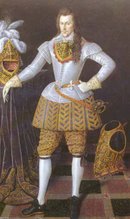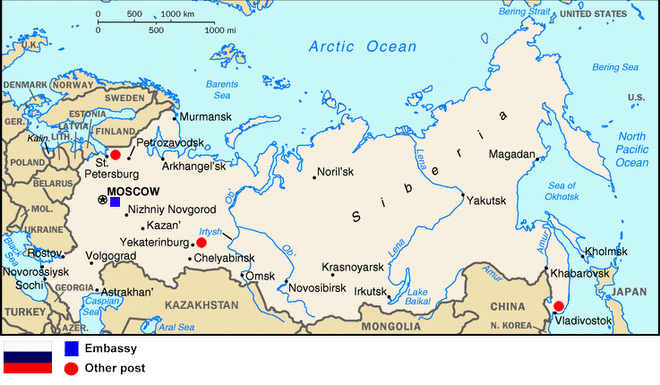Sunday night I was lucky enough to see Nadezhda Gracheva dance the title role in Giselle: as it turned out very lucky indeed. Giselle is one of the things for which the Bolshoi is most famous. Nadezhda Gracheva is my age (she is 38!!) and she is a goddess. Technical perfection and so emotionally acute, as to twist and yet simultaneously make your heart soar. She made me cry twice. And I don’t give a shit if anyone reading this thinks that makes me a mincing girl-boy. Needless to say, there are just a handful of nights at the Bolshoi in Moscow, the city that raises ballet to the apogee of human artistic achievement like no other, which you never want to miss. Tonight was one of those nights. I stayed for all five encores.
In the face of such genius, don’t overlook equally veteran principal soloist Andrey Uvarov: at that age [Gracheva’s partner obviously can’t be too young] to leap so high; to be so strong and so elegant is literally heroic.
Hats off, also, to Vyacheslav Lopatin: so often a ‘character actor’ in the Bolshoi cast, tonight I think he was like a new man – in the ‘peasant pas de deux’ – and the ‘home crowd’ (us regulars) knew it and we made the rafters of the Bolshoi New Stage rock, in our congratulations to him!
If only for the Bolshoi Facebook group, I wanted to trot through some other opera and ballet highlights recently. And celebrate one of the real privileges of living in Moscow: the world-beating liberal, musical arts on daily offer here.
I mentioned here that I had seen the Bolshoi’s newish Le Corsaire (about which arts Moscow was very excited, but the night I saw it I was exhausted and consequently under-whelmed, I must see it again) and the Stanislavski-Nemirovich-Danchenko’s Carmen, which was a total triumph.
I had been planning, with fidelity, to review the things I have seen in Moscow opera and ballet, but – boring of me I know –my job has been sucking the life out of me recently …er….I have been busy, and I have struggled to blog regularly.
At huge expense, I had front-row seats for ‘Kings of the Dance’ at the Bolshoi on 28th October. At its best, ballet is an ensemble experience so - as recorded by critics in the USA – I was initially uncomfortable with the idea of four male soloists showing off for the evening.
It is my practice to scribble notes on the program – my opera glasses have a discreet night-light – of performances I see. The ones I scribbled of act one were…um…quite vituperative.
Kings of the Dance is an American construction clearly devised for the YouTube generation and for audiences who like regular doses of television to lighten otherwise ‘difficult’ evenings of pure performance. It starts with a ‘home video’, on a huge screen, of the four performers. It is twenty minutes long. Forgive me but (a) I do not go to the ballet/opera and wish I had been to the cinema and (b) it has to be said that just as actors are often foolish talking about ‘their art’ (and are better viewed actually acting), nothing is so certain as to turn one off ballet than to sit and watch a movie of dancers say how inspired they are and how wonderful it all is. Terribly insipid and, alas, vapid. And outrageous. After a twenty minute video, there were only 18 minutes of live dance before the interval – remember some people had paid $300 for their tickets. Audience-reaction-wise the performers were in no doubt ‘it was not going well’.
The Russian (home-grown) of these ‘Four Tenors’ of dance was Nikolai Tsiskaridze, and either reader of this blog might recall I am not a fan of his campy prancing. I wish he had retired two years ago.
But tonight – and I have never seen this happen at the Bolshoi – he stumbled and fell. Muscovites love Tsiskaridze and the groan of despair was huge and heartfelt. I have no wish to rub his nose in it and can therefore happily say that the way he picked himself up and, at the end, defied anyone to give him less than a standing ovation, as he strutted off the stage – like a Roman Emperor - was, in truth, an extraordinary, memorable moment. The guy is a star, even if I am not a fan, it must be admitted. And stars have balls and enormous self-belief. So I owe him my salute, if only for that one moment.
This being Moscow, this US show had to have a greater than usual Russian content – because, naturally, one cannot have Moscow audiences believe that Russia is anything other than the Alpha and Omega of ballet. And I thank the producers for it. We were treated to the always cheeky Sergey Filin and the moody-but-brilliant, Ilze Liepa, perform ‘the Lesson”. Hitchcockian menace combined with genuine comedy, this piece (choreographed by Flemming Flindt, music by Georges Delerue) is just genius. And terribly funny, in a dark sort of way.
The four Kings danced together in a Christopher Wheeldon piece, ‘For Four’. Hmm…Americans and Brits think he is the Damien Hurst of ballet. I must have lost the plot because actually I think his work artistically suburban, in a wannabe-GQ way.
In the US première of this confection, the star turn had been Ethan Stiefel dancing Fosse’s ‘Percussion IV’. Evidently, Russians and Brits are culturally united because we both thought this 90210 of dance rather silly (but in the US, rather over-excited ballet critics call him ‘Apollo’). Yes he is pretty, but real ballet-lovers really aren’t interested in that sort of thing; no matter what tabloid caricature might have you believe.
One stand-out moment of amazing brilliance though: Johan Kobborg – from Denmark (and I keep reminding myself I must go to Copenhagen to see the Royal Ballet there) – did an amazing piece, The Faun (choreographed by Tim Rushton, music by Debussy). In my scribbled program notes it says: “…best solo ever seen…mesmerizing…technically brilliant…raunch” (LOL).
Spain’s Angel Corella was also featured. But I struggle to understand why.
As part of its ‘Dance Inversion’ ballet festival, the Stanislavski-Nemirovich-Danchenko hosted the Portuguese National Ballet’s ‘Pedro & Ines’ (I saw the 18th November performance). This famous – if you are Portuguese – medieval tale is part Romeo and Juliet and part Eloise & Abelard.
This was quite unlike anything we ever see in Moscow. It was a small, dark jewel of a work: like a nineteenth century necklace made of jet. Both darkly glamorous and also deeply mournful, it was intelligent, challenging and very worthwhile to witness. And surprising. It is not often that one gets to see the romantic leads, literally, dance in a pool of water (the splashing was beautifully lit), nor have I ever seen necrophilia ever so movingly portrayed. It was dramatically dark and was a perfect Russkie-Iberico mix (choreographed by Olga Poritz).
16th November, I was at the Bolshoi again for the Shostakovich ballet, ‘The Bright Stream’. The orchestra was on top-form (courtesy I think of conductor, Pavel Sorokin, who I think is a real maestro). My program notes highlighted Andrey Merkuriev (I am a fan), Ruslan Skvortsov – no great actor, but well-suited for this part – and Yekaterina Shipulina. The comedic role danced by Irina Zibrova was also a highlight. But I think the best performance was Kseniya Pchelkina – incidentally an unusual Russian surname – as Galya, the schoolgirl. Bright stream is that wonderful, if very rare, night at the theatre: a comedy by Shostakovich.
19th November and for the 3rd time this season I saw the Stanislavski-Nemirovich-Danchenko’s ‘Chaika’. I l.o.v.e. this ballet. There was a slightly worrying opening when the otherwise excellent (and convincingly impetuous) Kostya (danced by Dmitriy Khamzin) handled Veleria Mukhanova (dancing the role of Nina) rather like a leg of lamb in Smithfield market. Opening nerves, I think, and he later truly excelled…he is a hugely talented young dancer and each performance I see of him is better and better: definitely a long-term talent to watch.
If is fashionable to direct Chaika (the Seagull) in a slightly Oedipal context these days, at least in the theatre. This ballet is no exception. Tatiana Chernobrovkina, as Irina, Kostya's mother, milked every cent out of that idea. And hers was a delicious performance. As I have said before, this is one of the most invigorating ballet productions I have ever seen and I just love how fresh and vital it is.
2nd December and, back at the Bolshoi, I enjoy another viewing of ‘Night of American Ballet’. I always try to go whenever ‘In the Upper Room’ is on (the Bolshoi has performed this one act piece eight times (?) and I have seen four of them).
Technically, this collection of three one act ballets is a is a ‘celebratory evening of 200 years of US-Russian diplomatic relations’ and a celebration of ‘American ballet’ (sic). Yeah right. The program is incredibly political and a huge bitch-slap towards American ‘Kulture’; but done in a hugely subtle (and therefore pas trop Sovietique way). The inner-truth, da vinci code-like (LOL), is in the program notes (along the lines of “there may be lots of ballet in America, but it is a land devoid of soul, culture and all the ballet there is stolen”).
Act one. Serenade. Music by Tchaikovsky, choreographed (1934?) by the Frenchman, Georges Balanchine. Um… this is a celebration of American ballet? Terribly dull, BTW, I am so over Balachine.
Then we saw the hugely mournful ‘Misericodes’ (choreography by [Englishman] Christopher Wheeldon, music by Arvo Pärt; an Estonian! Wonderful music actually, although a shockingly poor trombone soloist in the orchestra hid the fact well). Now, among serious ballet lovers, the jury is definitely out as to whether Christopher Wheeldon is a genius or an arse. Me? I am still deciding.
But the Bolshoi ballet notes leave no room for doubt in their propaganda: “…like the royal court for the long-awaited miraculous birth of [a] Princess…[t]hey rocked this ‘Wheeldon’ in its cradle, they [the American ballet establishment] played with it, gave it toys and were certain it was a genius though the infant has not yet managed to create anything brilliant. They loved it, they forgave it, they laid their hopes on it. This became the élan vitale of the trade union of American ballet critics…This story is therefore more interesting as the trade union of US ballet critics is made up of mostly ladies and young women with problems in their private lives [read: lesbians]”. Hysterical! [extract from the official program essay by Pavel Gershenzon].
“They preach feminism and Marxism,” like, it sniffs, they have nay the real idea, “they hate children and independent men”. You couldn’t make this shit up!! You have to admire the sheer brass balls of post-Soviet, Putinista Russia. Because here, as ‘twas ever thus, art is politics, is culture is war by another means).
The evening ended with Twyla Tharp’s, ‘In the Upper Room’. I cannot describe how much I love this work; his music, the young Bolshoi soloists’ performance. For the duration it is just me and them on stage, tunnel-vision-like, and I am conscious of nothing else. Fantastic!
Subscribe to:
Post Comments (Atom)





No comments:
Post a Comment